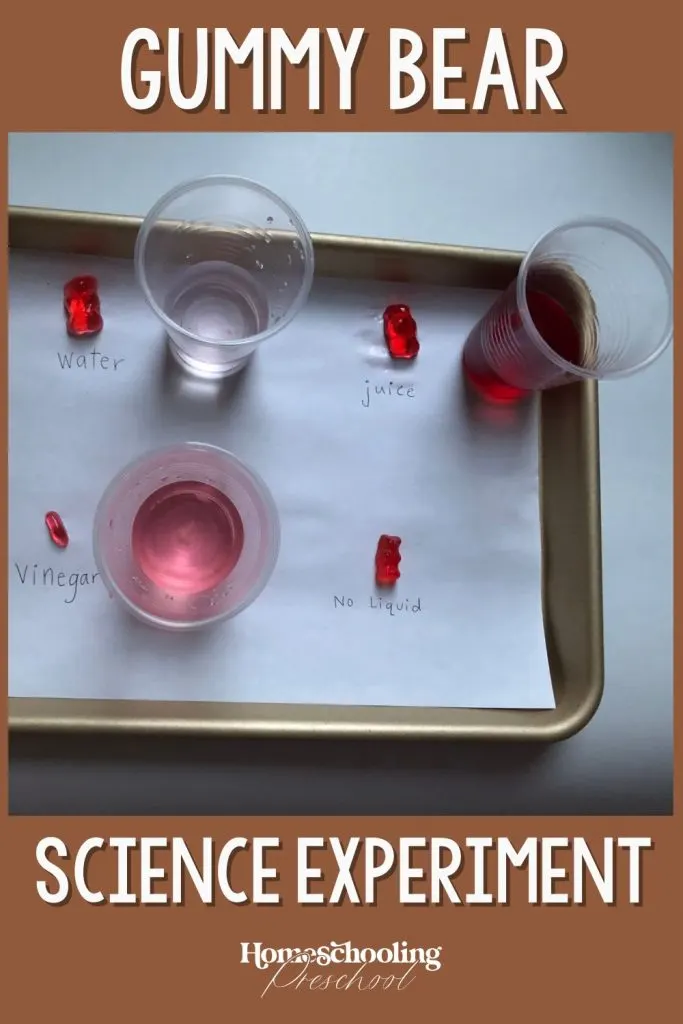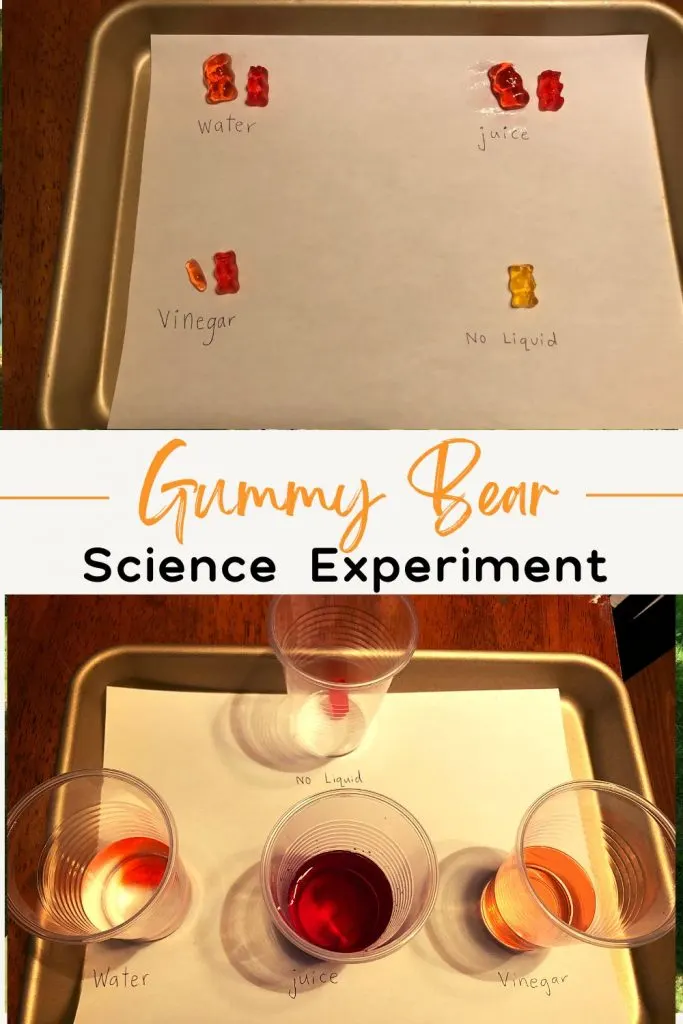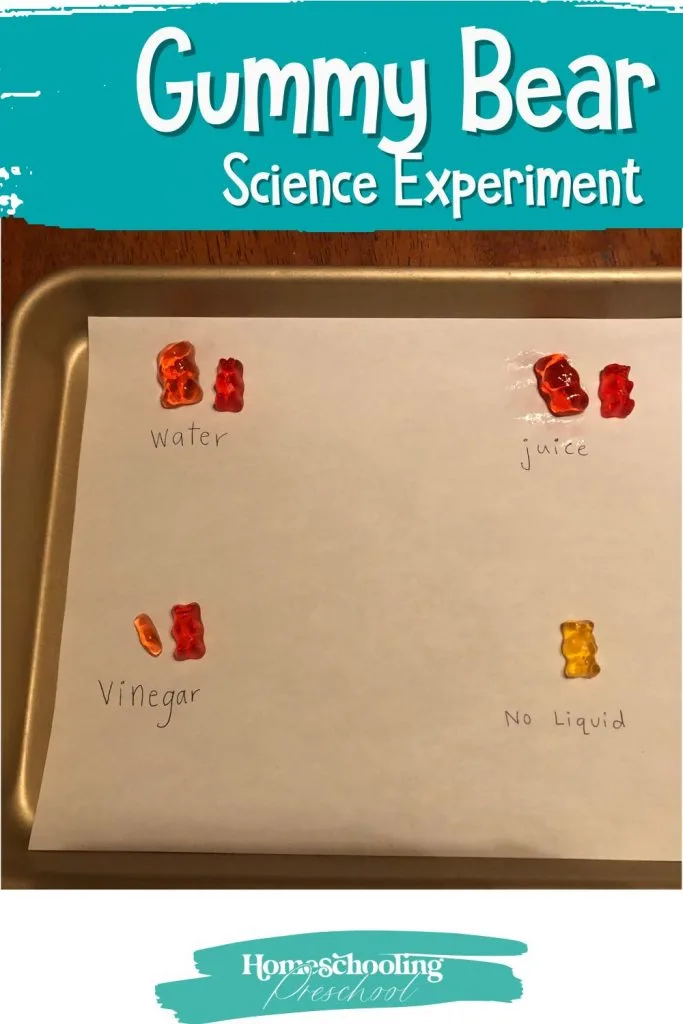This gummy bear science experiment is sure to ignite awe in your little scientist.
It uses items you already have on hand and it’s mess-free!

This article may contain affiliate links to products that may help you when homeschooling preschool.
Why Do a Gummy Bear Experiment
Introducing science and scientific thinking to kids when they are young helps them to learn how to problem-solve.
It also helps them to critically think about what could happen and make predictions.
The great thing about science is that a prediction (called a hypothesis) can then be tested to see if the hypothesis is correct.
Your kids get to choose what liquids they want to put the gummy bears in.
Water, juice, and vinegar are most likely to be already on hand so it is suggested that you start with those.
The vinegar does not create the same outcome as the other two which is why it is a great addition to the gummy bear experiment.

This experiment can be done many times with different outcomes.
Changing the liquids, the time the bears are left in, the color of the bears are all ways to make this experiment different.
If changing something, choose one thing to change so that your kids can know for sure that it was that one thing (like the time left in) that was causing the difference in outcomes.
The gummy bear experiment is part of week 44b: Bears in our Homeschooling Preschool Curriculum.
Be sure to check it out to find other activities that go with the bear theme.
The Science Behind the Gummy Bear Experiment
When the gummy bear is placed in water, it goes through something called osmosis.
This is a big word that means the water from the outside of the gummy bear moves inside the gummy bear.
The gummy bear has tiny holes that we can’t see with our eyes.
There is a lot of water in the cup.
The water molecules get crowded and want to go somewhere there aren’t as many other water molecules.
The gummy bear has room inside of it so the water goes through the tiny holes into the gummy bear where it isn’t so crowded.
All this extra water makes the gummy bear grow in size, just like a water balloon!
The gummy bear in the vinegar will grow as well, but at the time, the acid in the vinegar breaks down the gelatin that the gummy bear is made from.
This is why there are only little pieces of the bear left.

What You Need
- gummy bears
- cups
- different liquids– water, juice, vinegar, etc.
- Paper
- something to write with
How to do a Gummy Bear Experiment
1 – Decide what liquids you want to use.
2 – Pour water into one cup, juice into another cup, and vinegar into a third cup.
If your little one has another liquid she wants to test, pour this liquid into a fourth cup.
Use a measuring cup to help keep the amount of liquid poured into the cups consistent.
3 – Add a gummy bear to each cup.
You may want to have a cup with no liquid in it so that you will be able to use a dry gummy bear to compare to the gummy bears in the liquids.
4 – Set the cups in a place they won’t get knocked over by little hands.
This may be the hardest part of the experiment!
5 – Wait a few hours and check the gummy bears.
6 – Label a sheet of paper with the liquids and place the gummy bears by the correct label.
7 – Compare the gummy bears.
**For your health and safety, please refrain from eating the soaked gummy bears after the experiment **

Gummy Bear Experiment
This gummy bear experiment is a great way to show your little ones osmosis.
They are sure to enjoy conducting this experiment over and over (and snacking on a few gummy bears, too).
